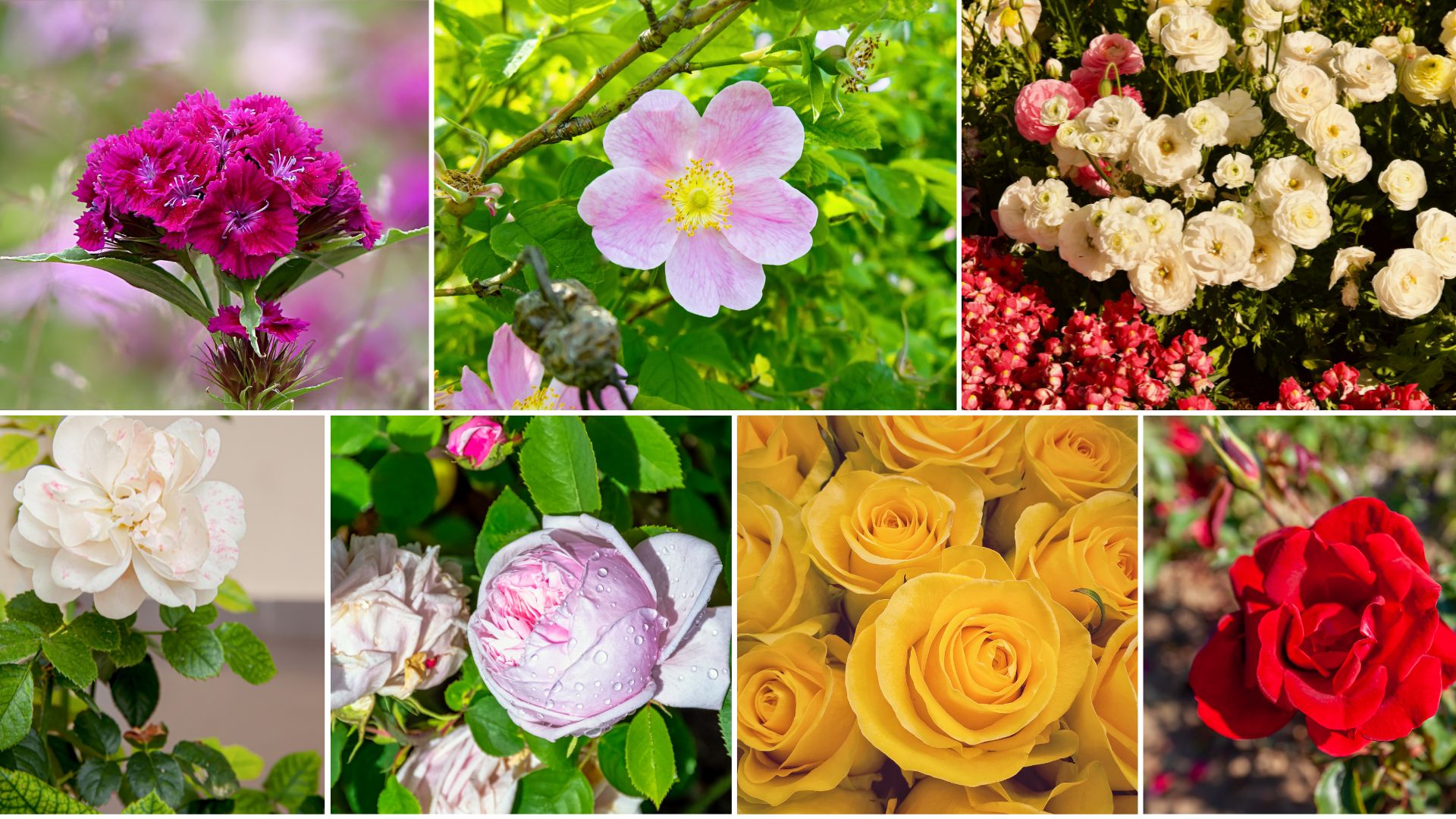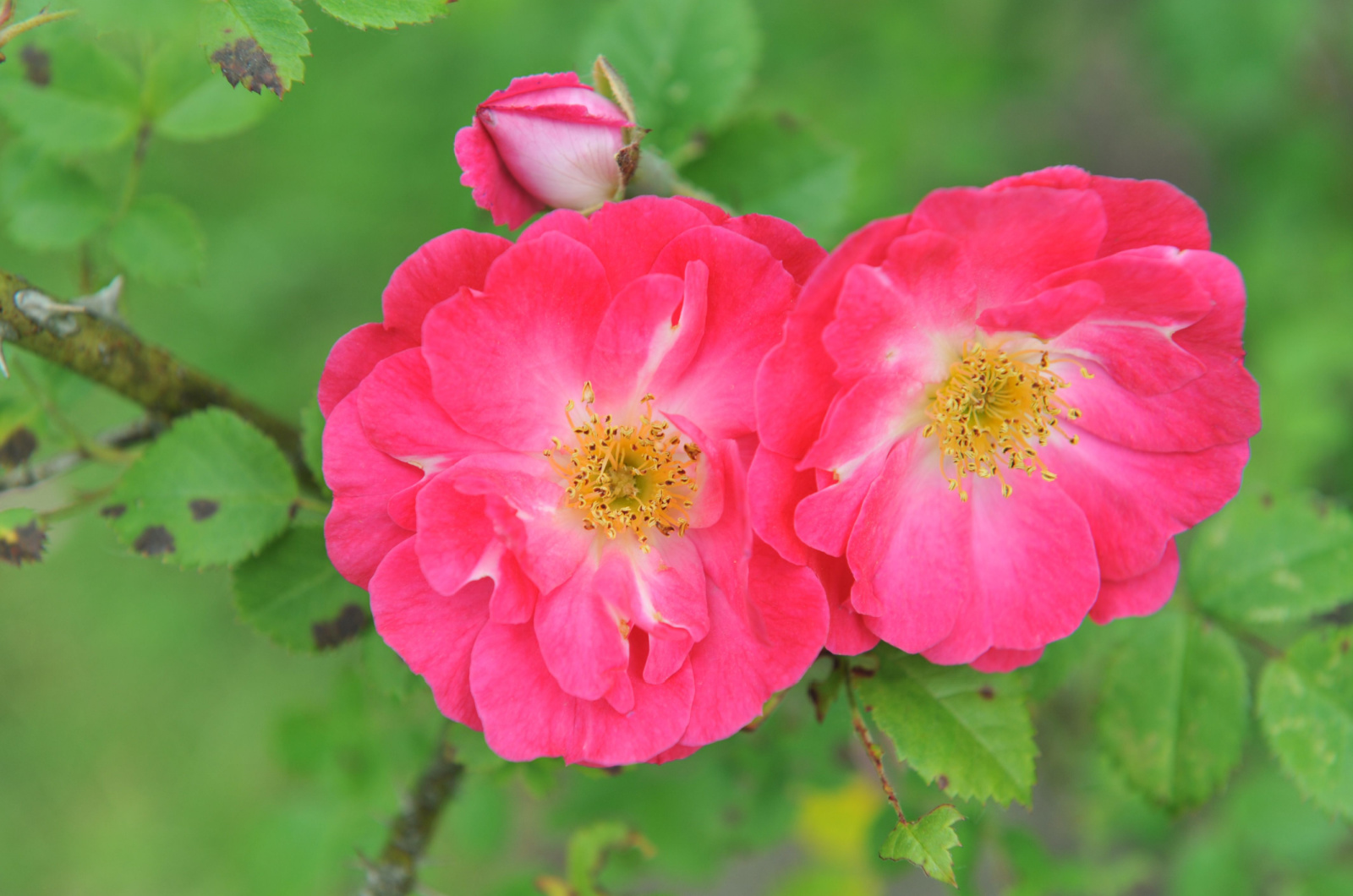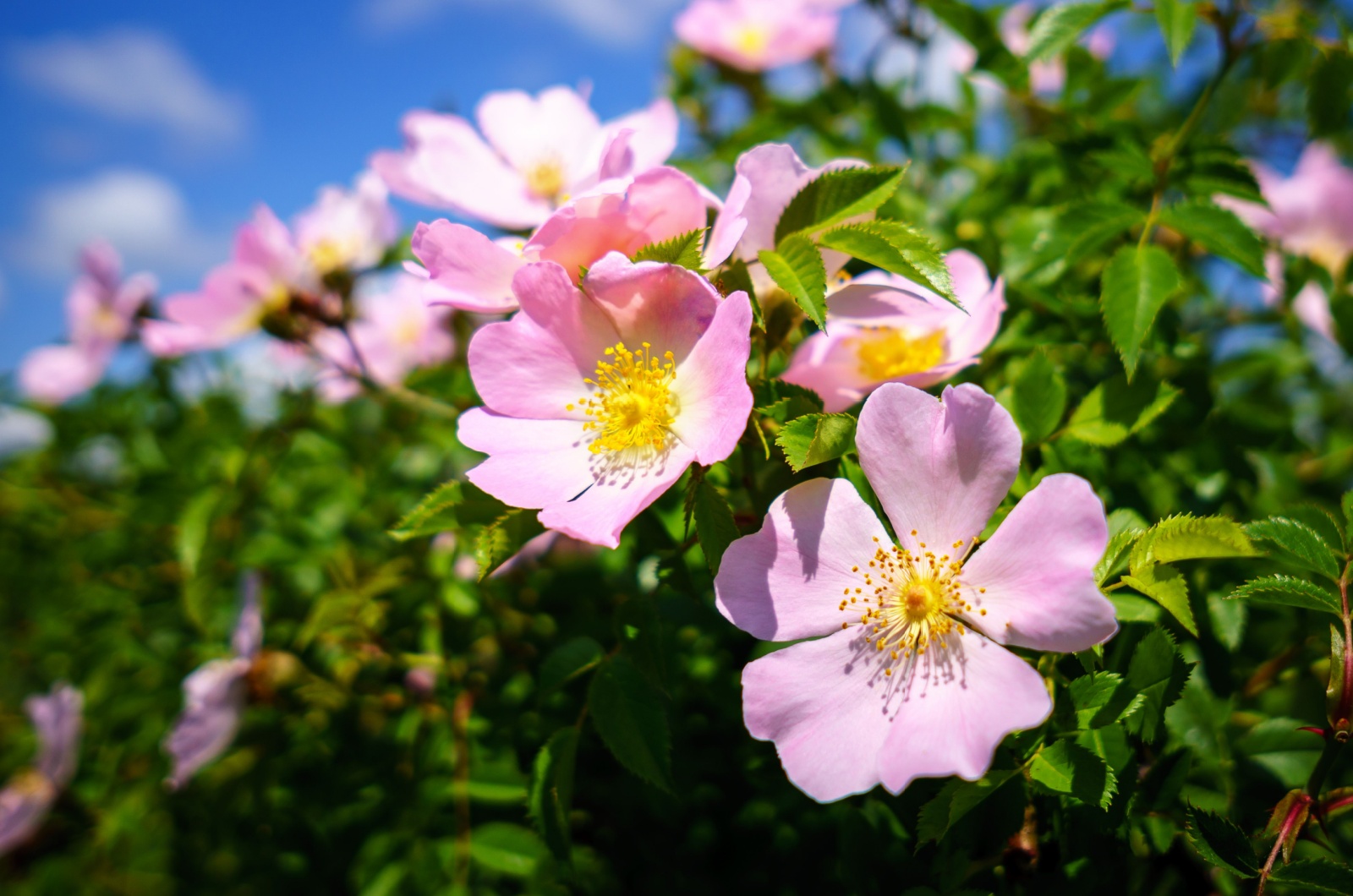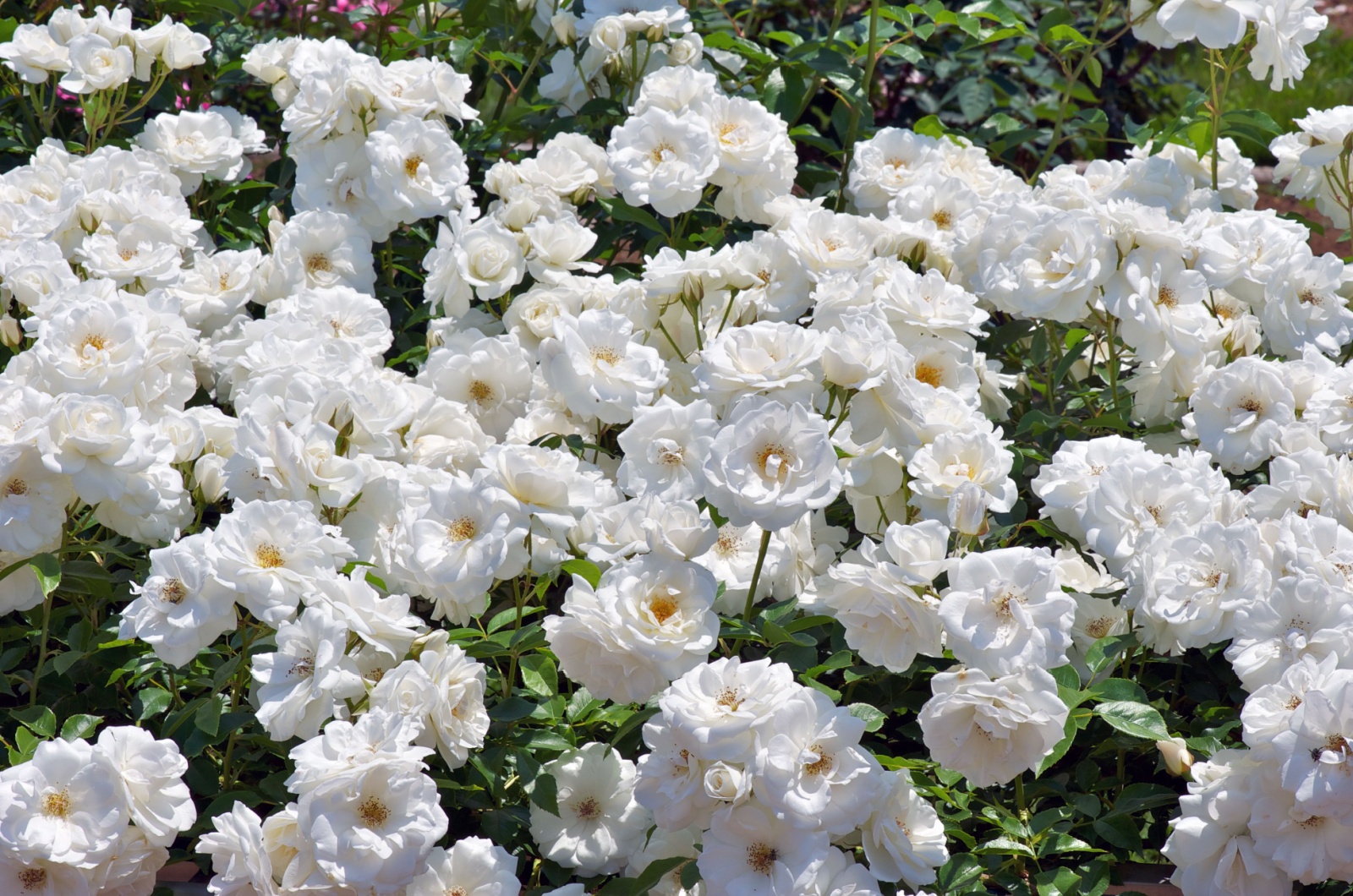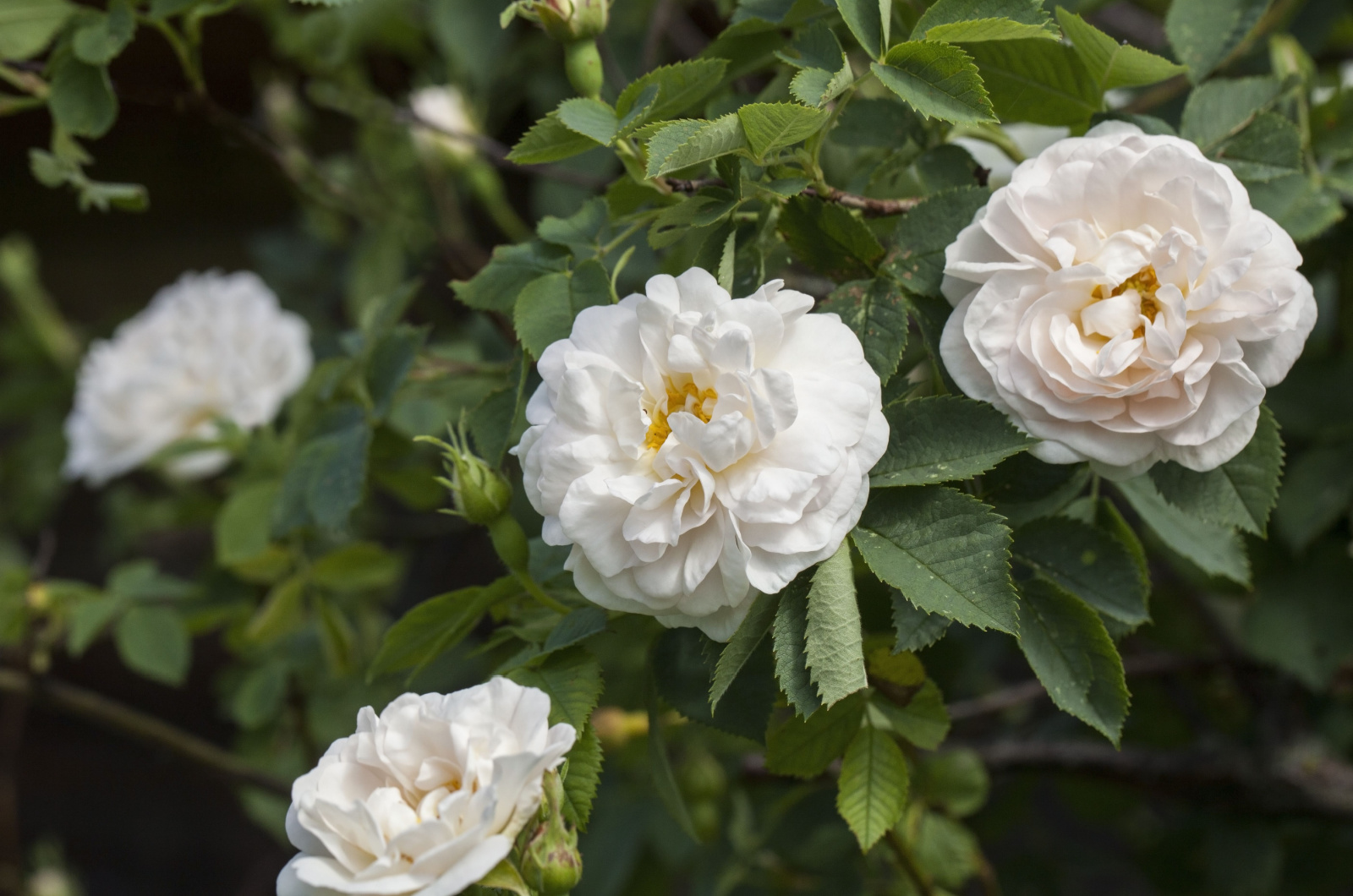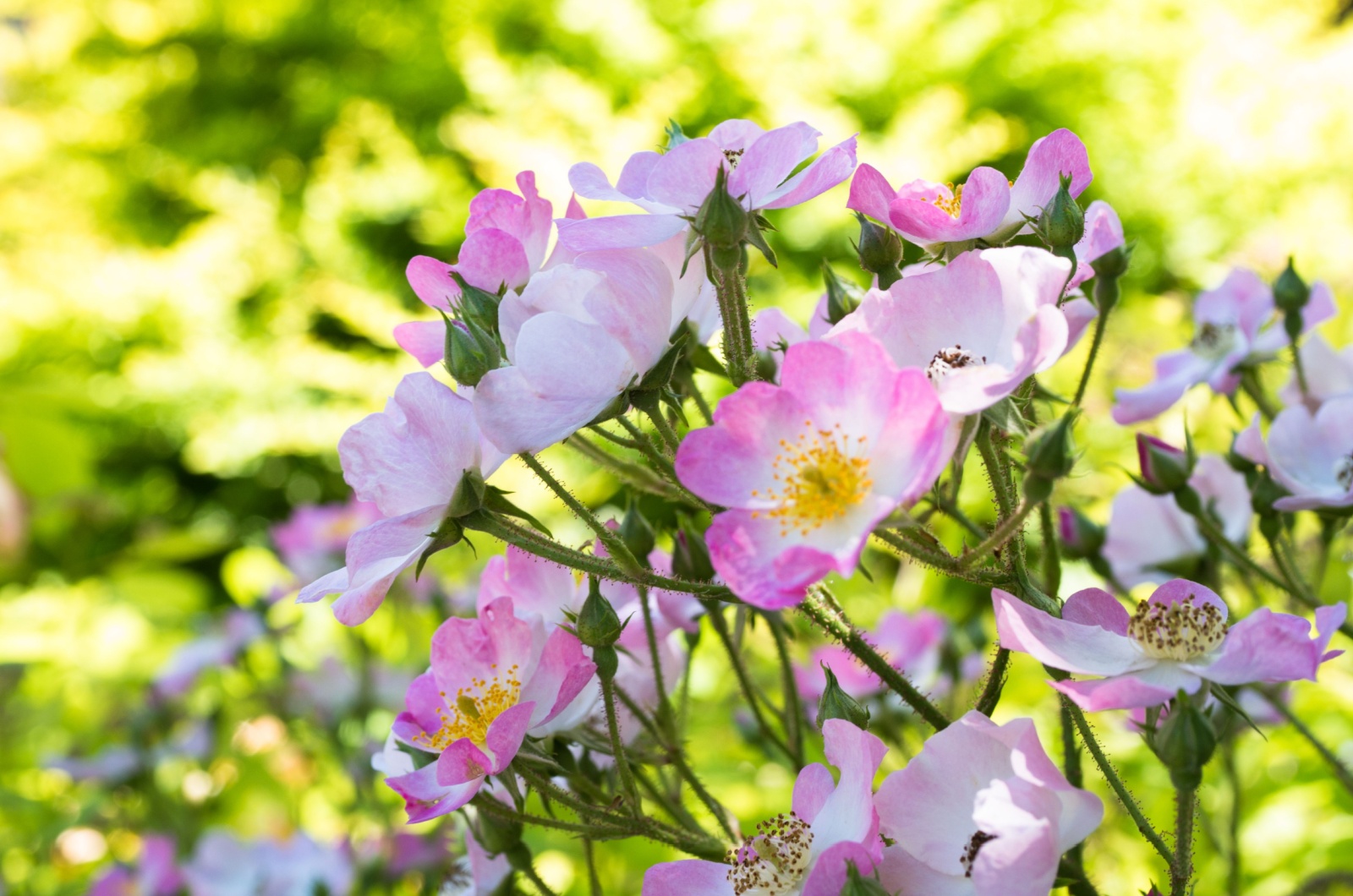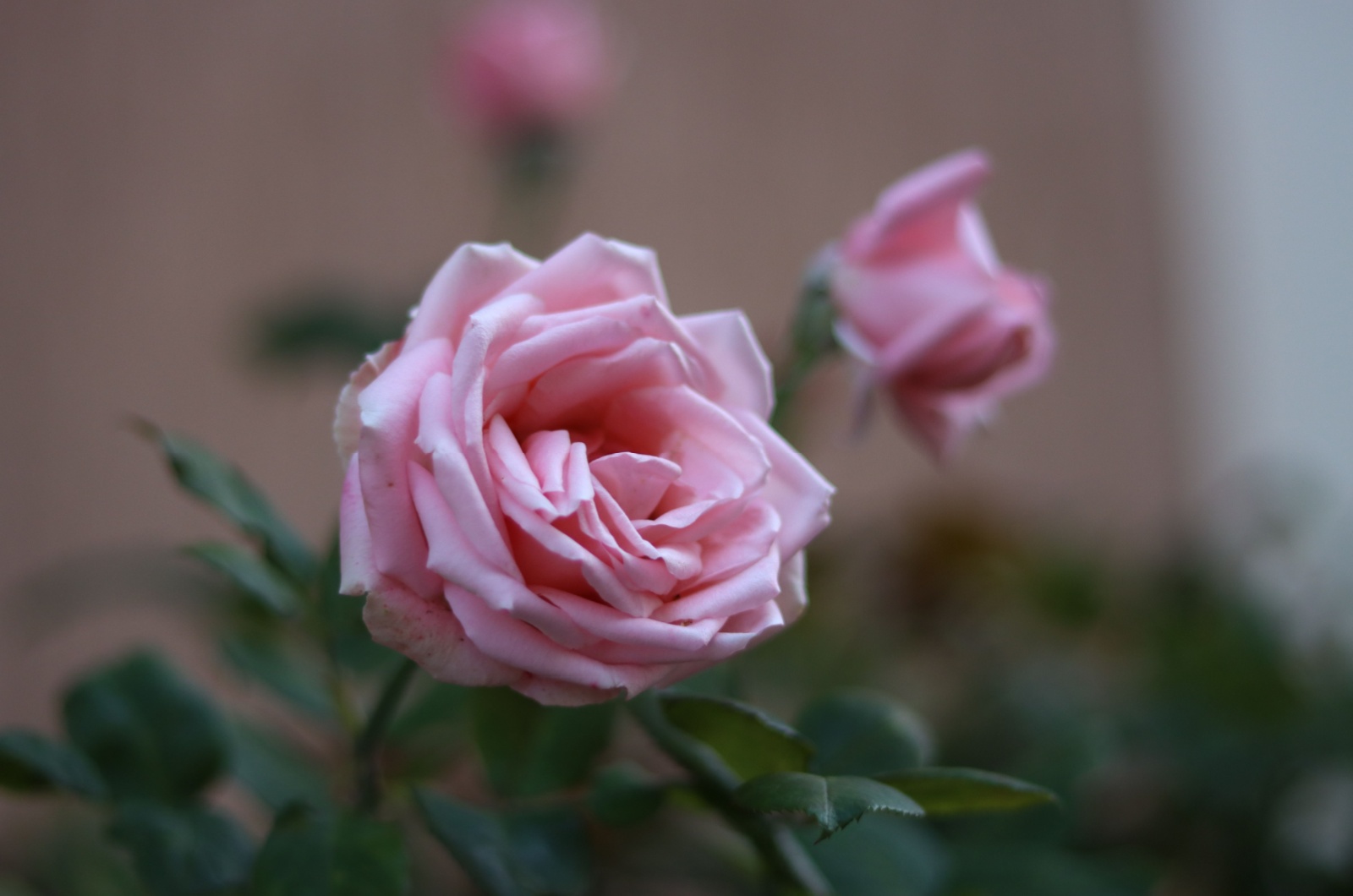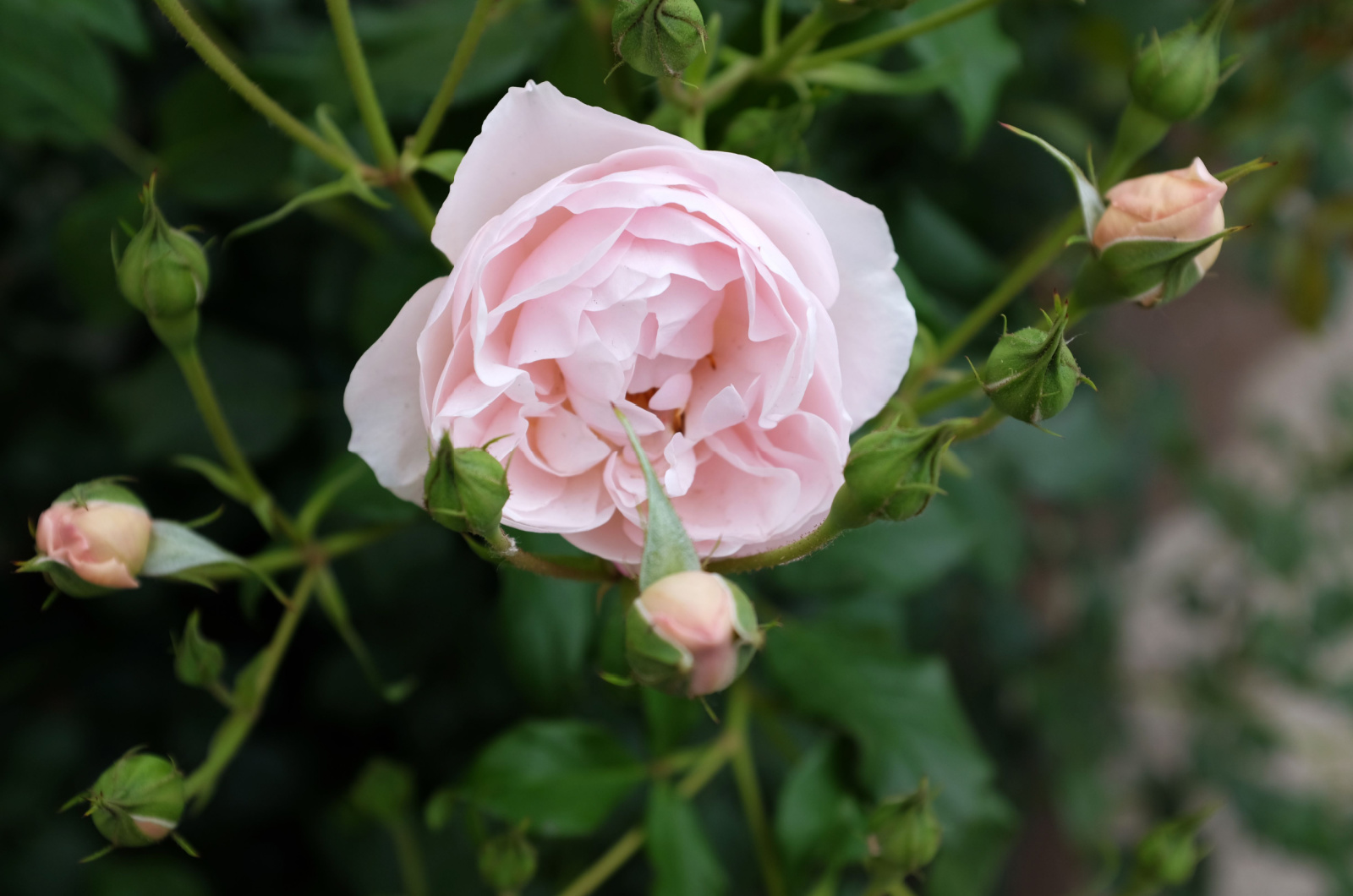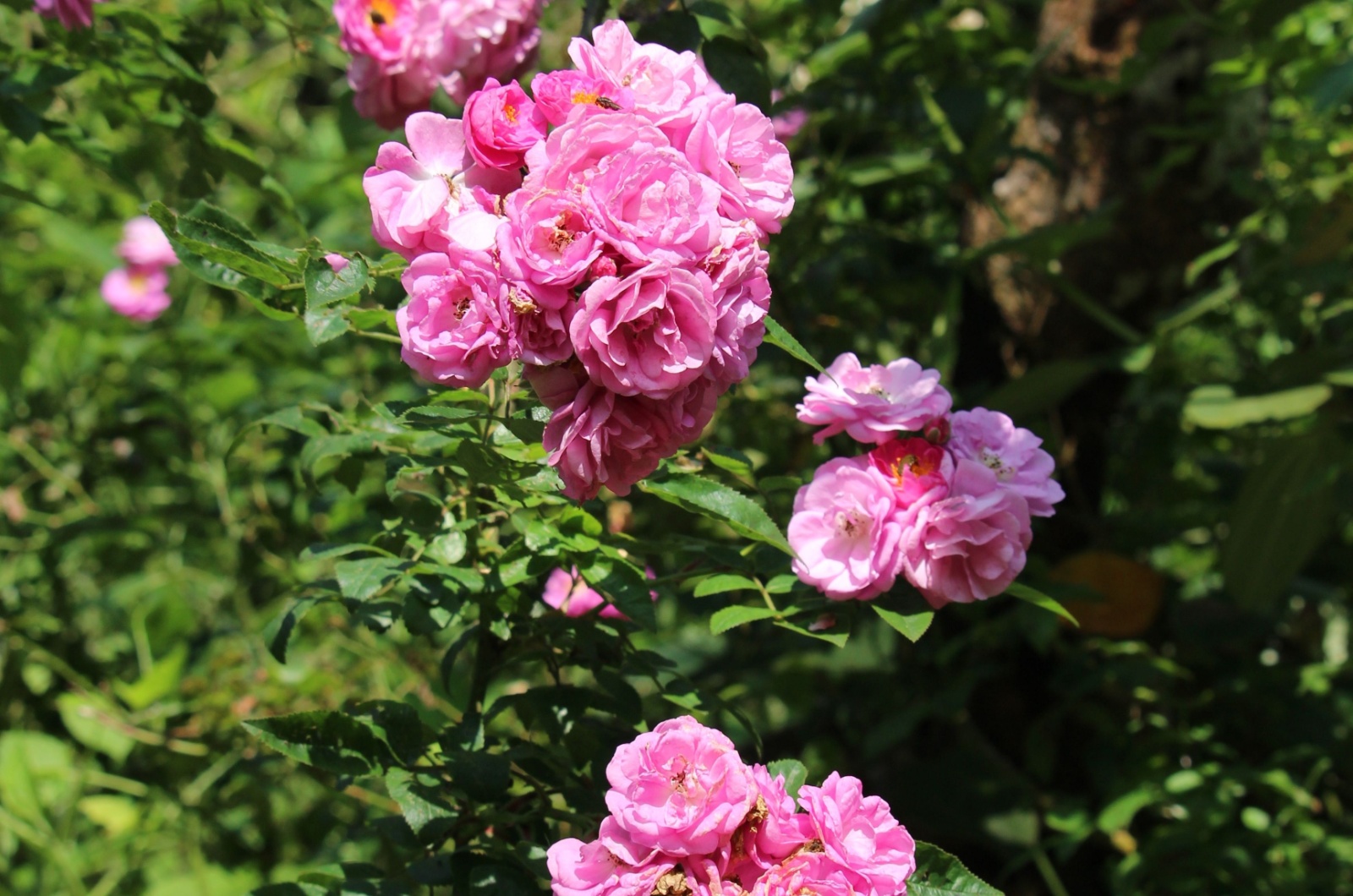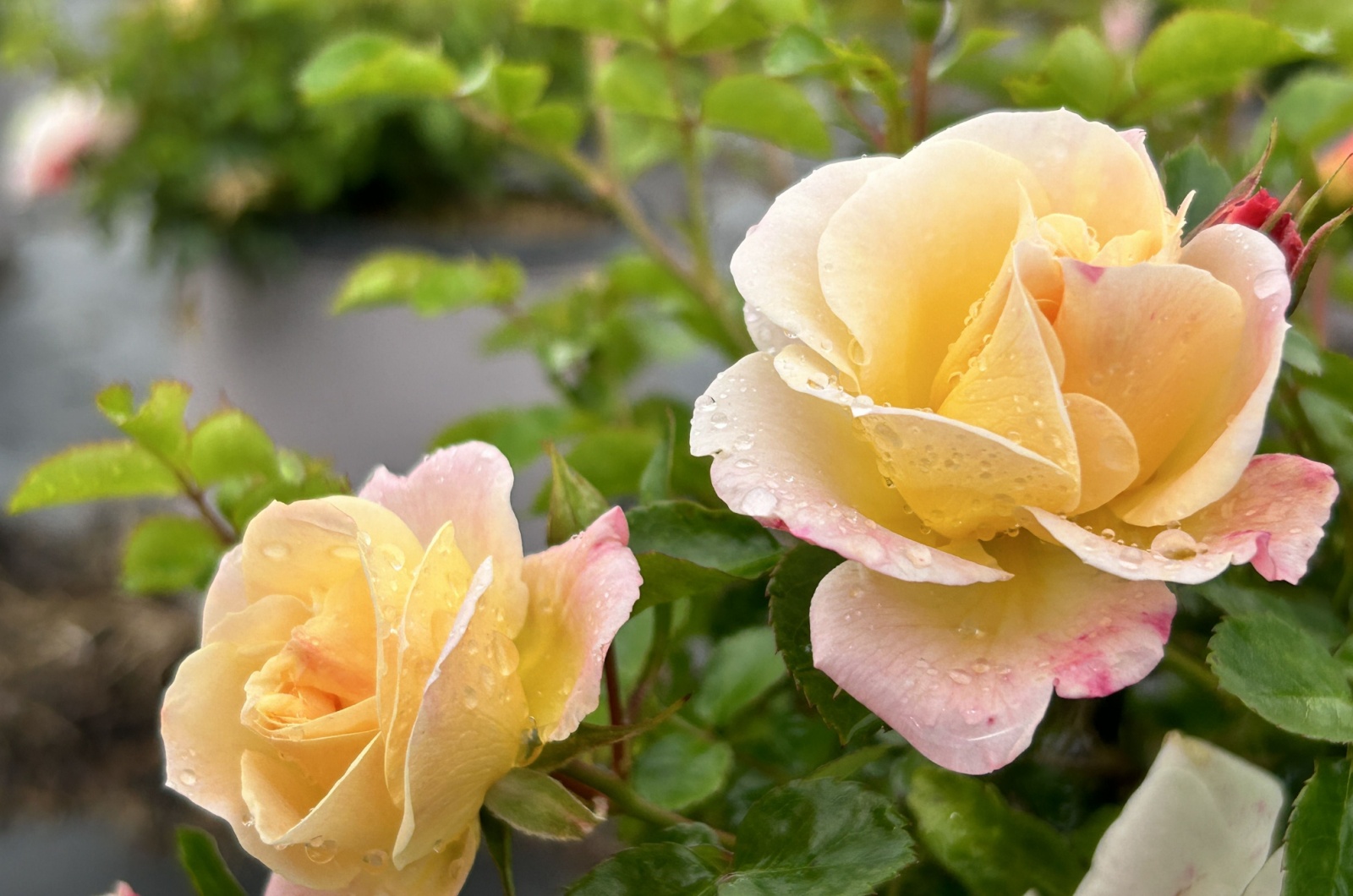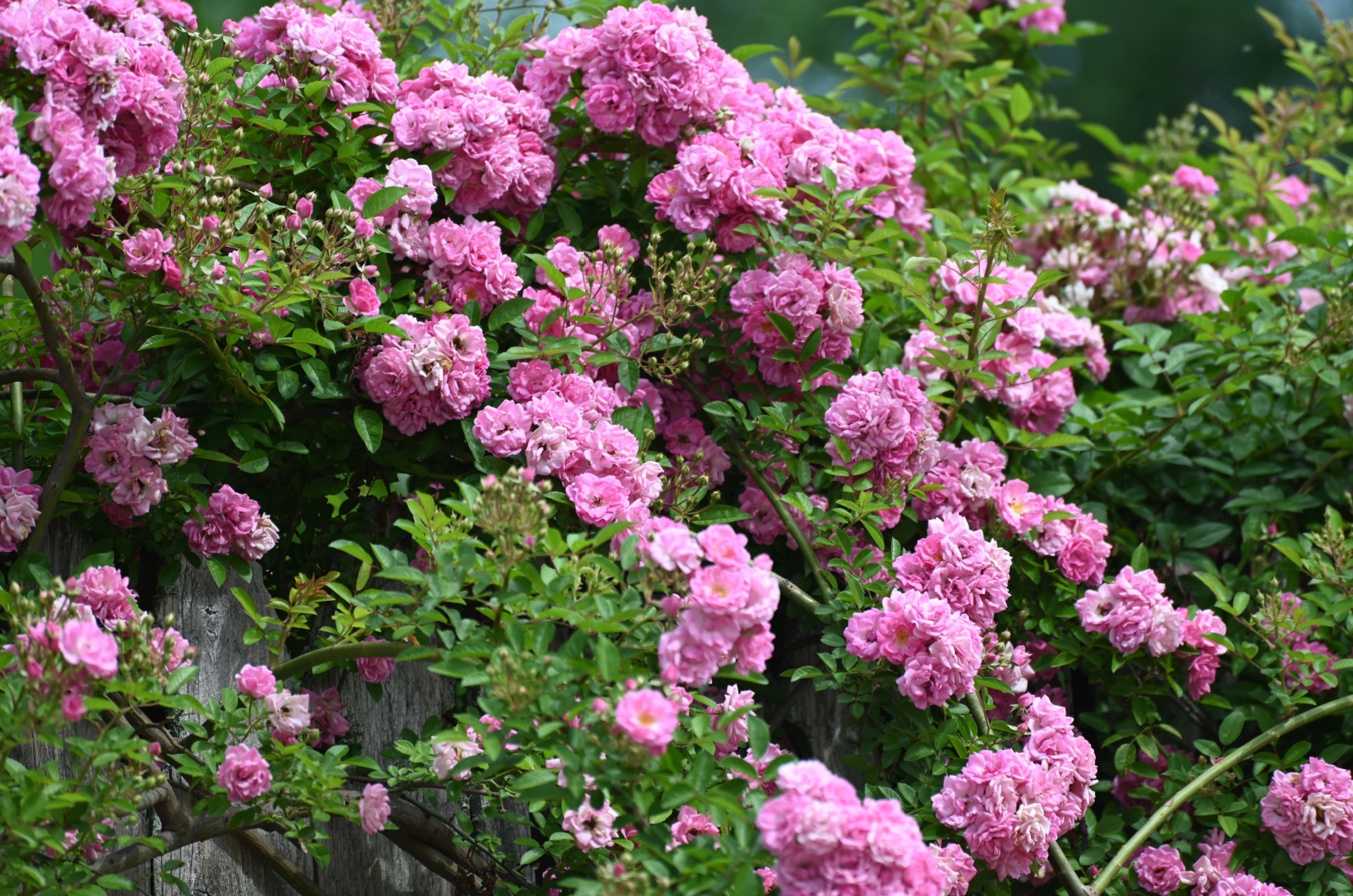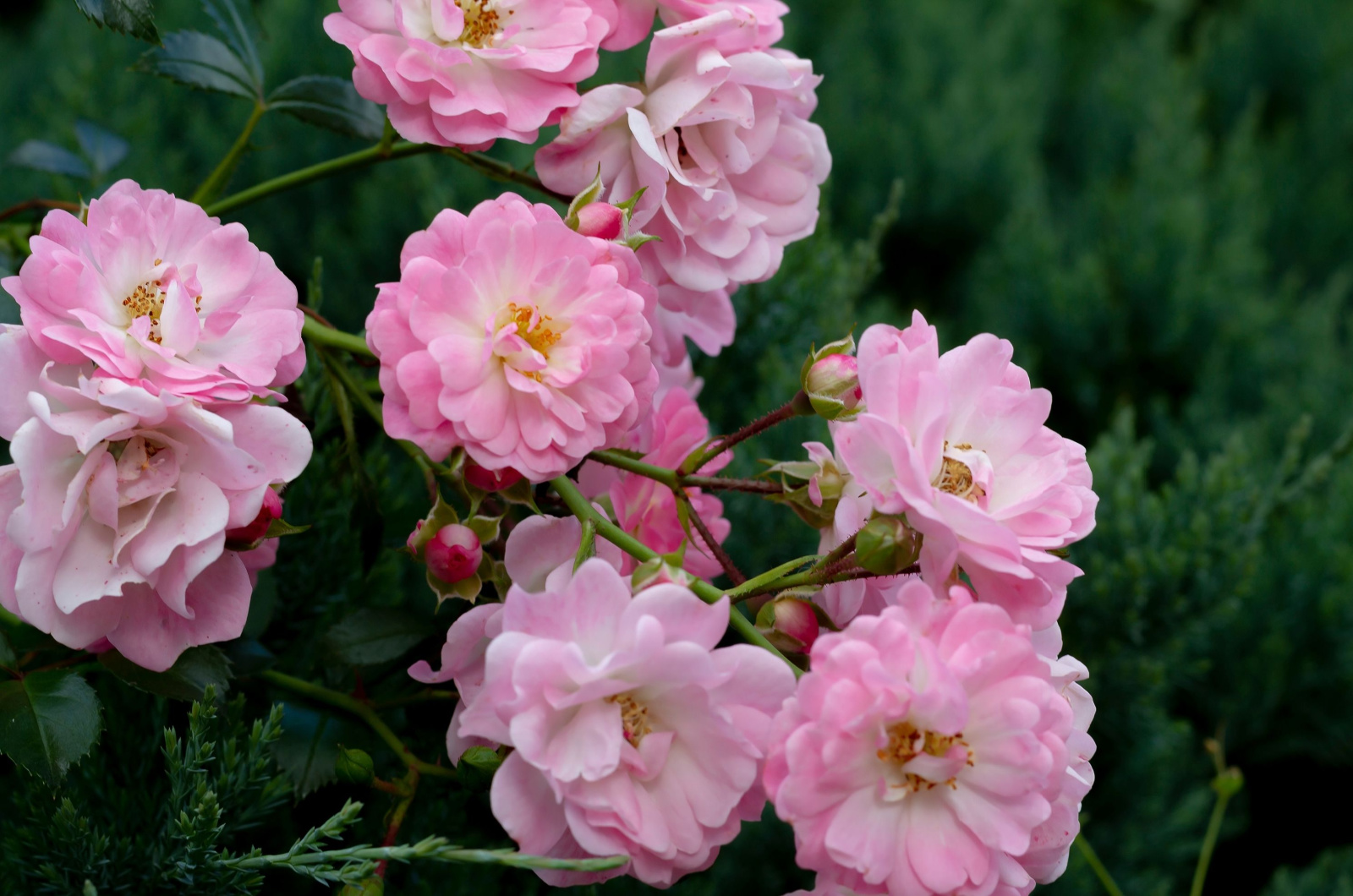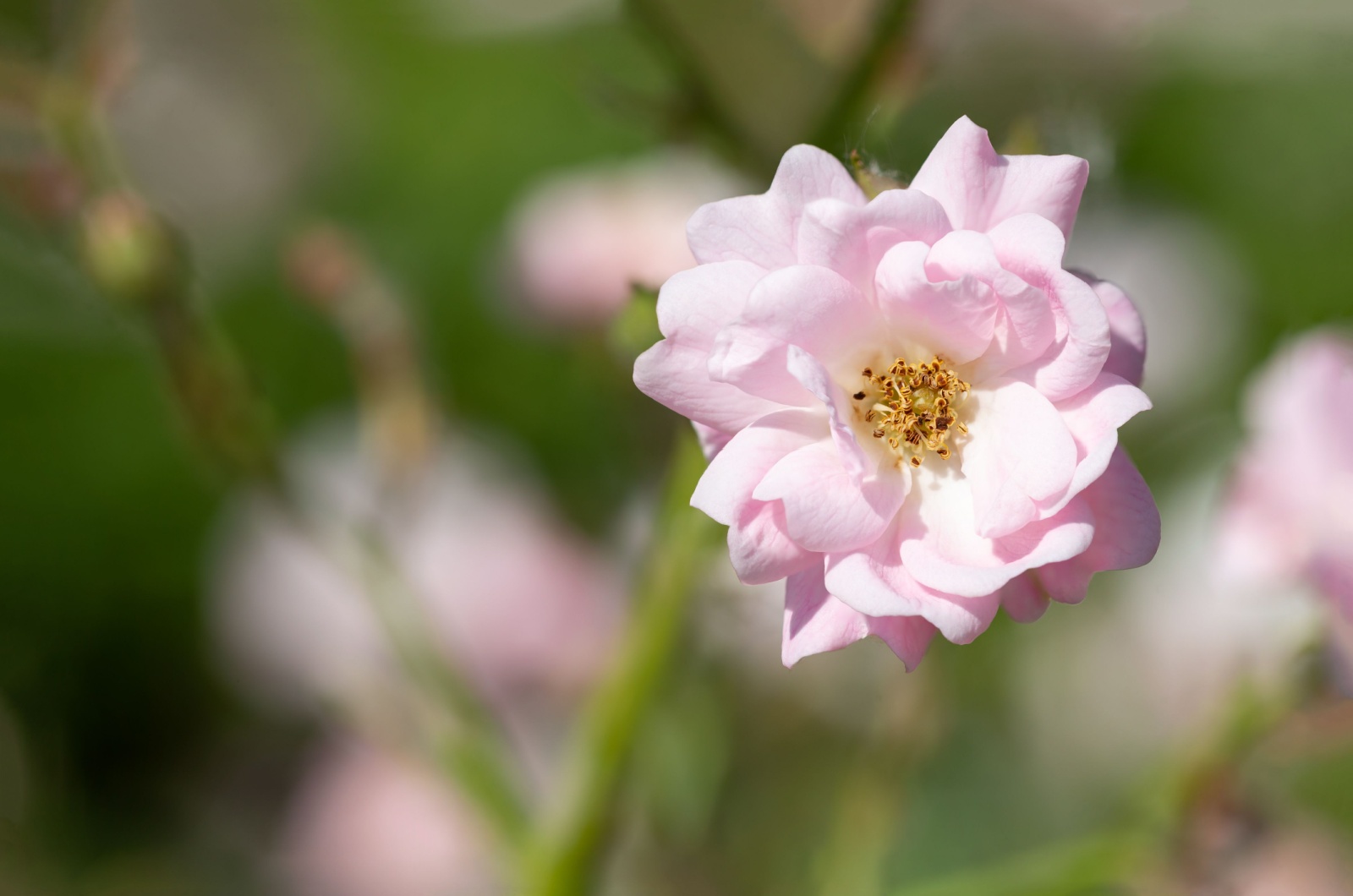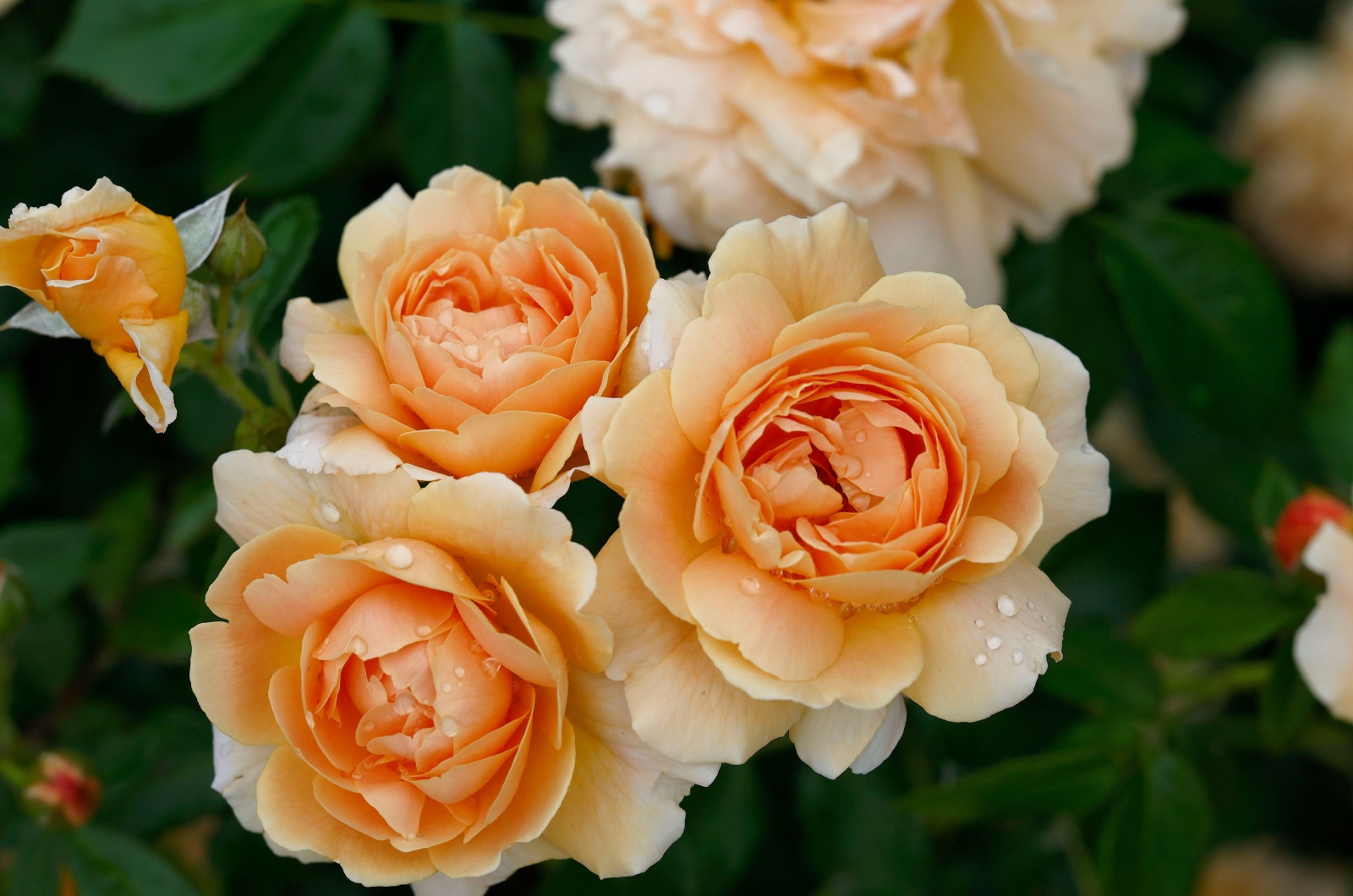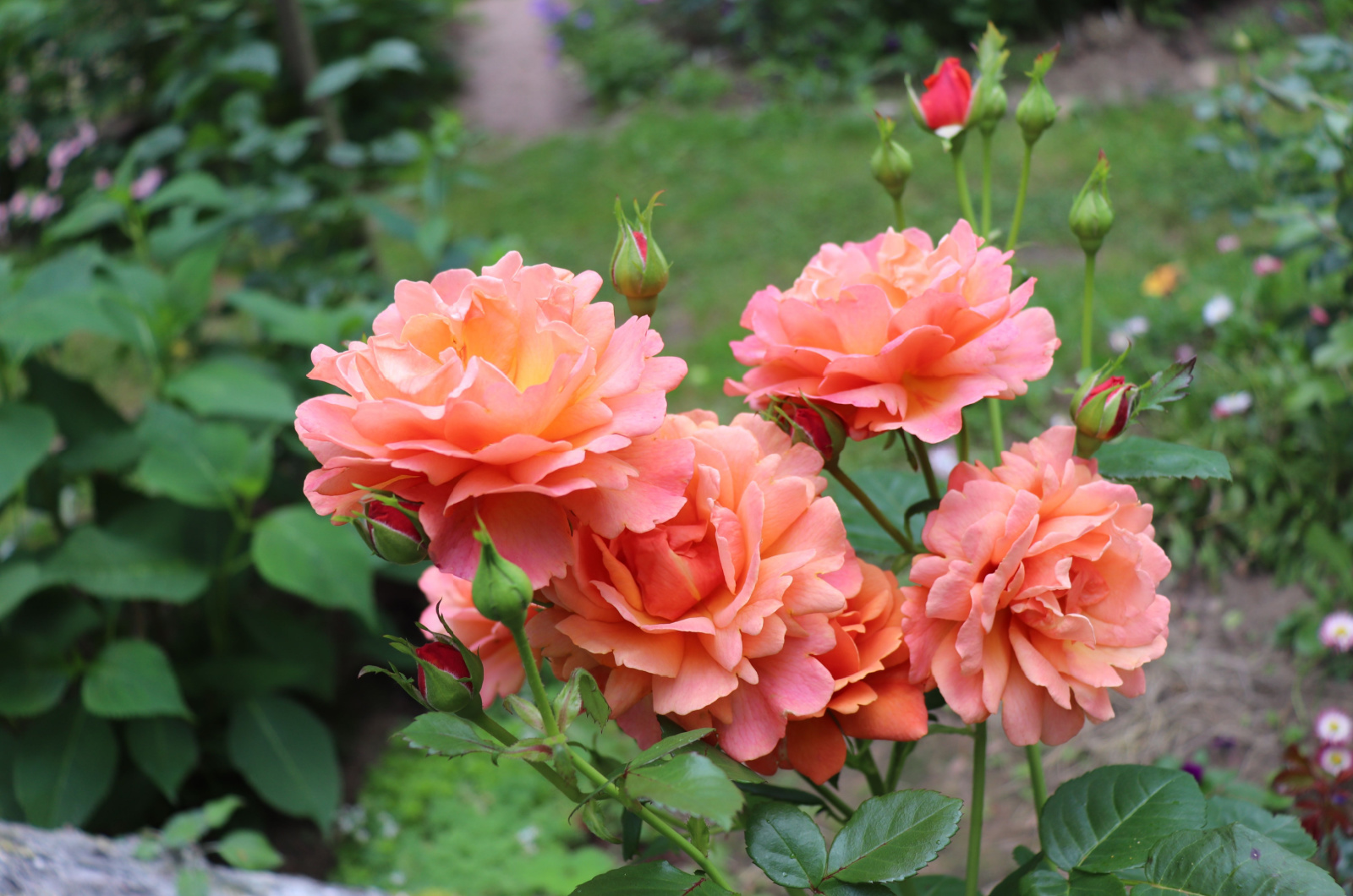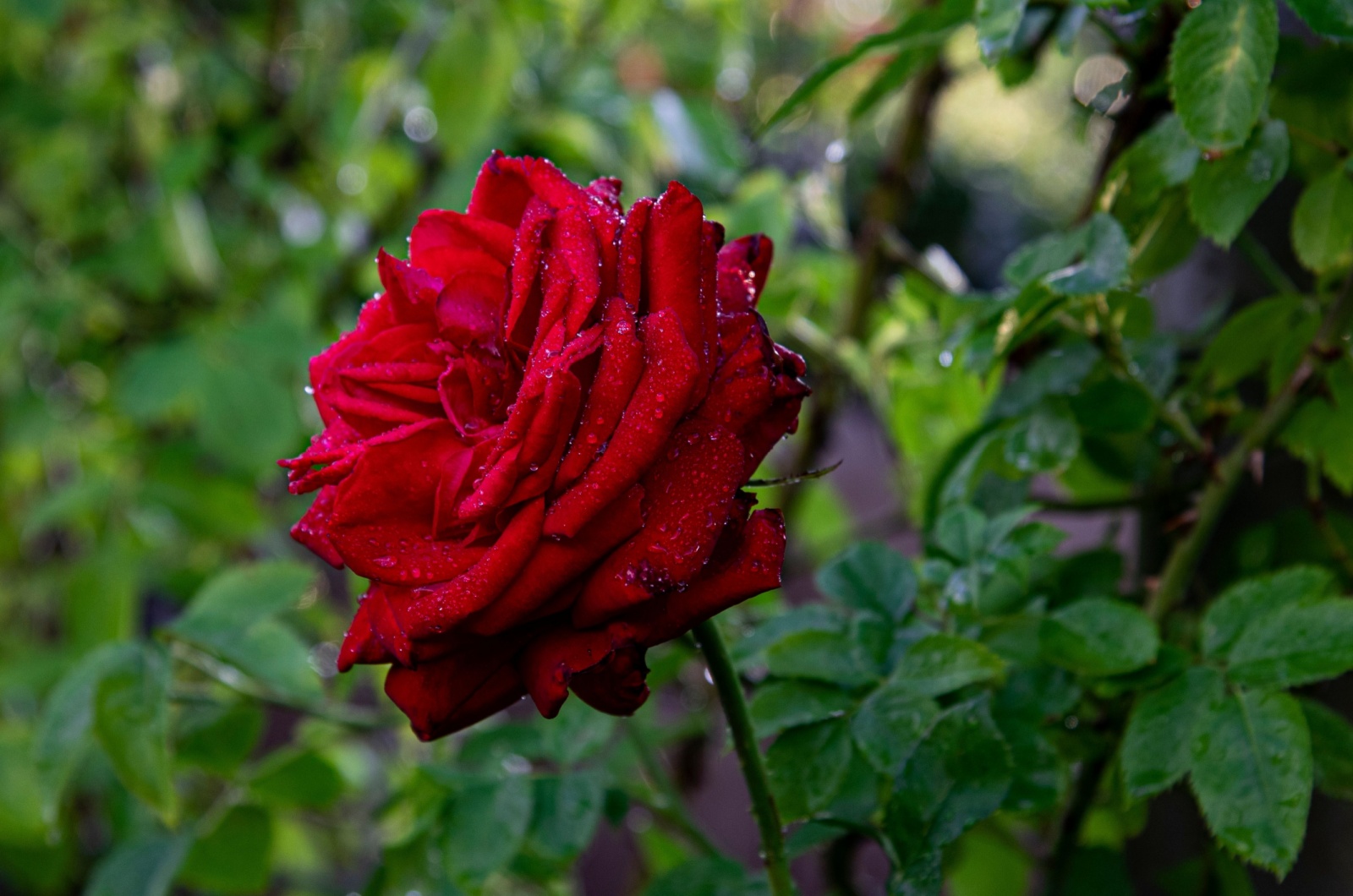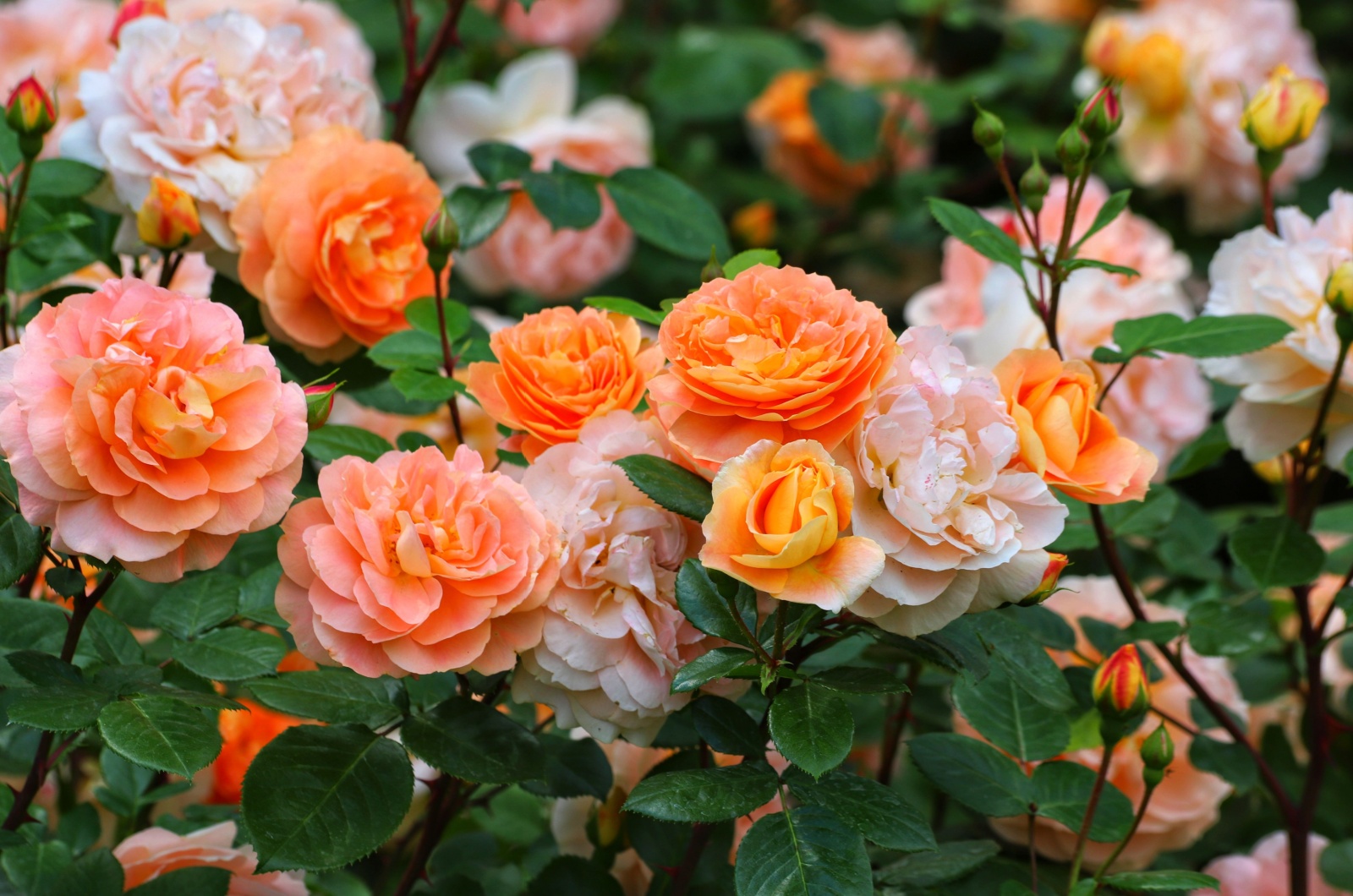How many times have you heard that roses are one of the hardest flowering plants to maintain? I’m not gonna lie to you, these plants can be really fussy over their growing conditions but the great thing is that not all rose varieties act like this.
So yeah, there are some tough roses that aren’t susceptible to diseases and even pests don’t visit them often. Additionally, they require less maintenance and won’t turn your gardening experience into a living hell.
Let’s see 17 roses that don’t act like drama queens!
1. William Buffin
The first rose variety on our list is the captivating William Buffin. It generates an abundance of semi-double strawberry-pink blossoms and can reach up to 10 feet tall with minimal care.
This variety is hardy in USDA zones 2 through 9 and can survive even the harshest winters, plus you don’t even need to protect it.
William Buffin roses prefer full sun and show excellent tolerance to mildew and black spot diseases.
You can enjoy its vibrant blossoms from spring up until the first frost. But there’s something left for the winter, too; gorgeous rose hips appear on the shrub and you can harvest them until the spring arrives.
2. Rosa Woodsii
If you’re aiming for a more informal garden design and want to grow some roses in it, I highly recommend the Rosa Woodsii variety. I’m telling you, this plant is nearly indestructible!
This Western US native requires a lot of space to spread, so if you have a larger garden, look no further than the Rosa Woodsii.
It thrives without water and literally doesn’t care about the soil type. Additionally, it can tolerate both full sun and partial shade, so it’s easy to find a spot in your garden.
However, there’s something you need to be aware of; since this rose thrives even on total neglect, it can spread uncontrollably and form a dense thicket.
In my opinion, it’s worth it; you’ll get an abundance of breathtaking violet-pink single flowers, bees will have plenty of nectar to feed on, and birds will have shelter and enough hips to feed on all winter long!
3. Iceberg
Do you like white roses? If so, I have a perfect variety for you – the Iceberg rose, an Italian rose that leaves everyone speechless. No wonder it’s so commonly cultivated worldwide!
This variety performs best in USDA zones 4 through 10 and will produce an abundance of blossoms if you provide it with a lot of full sun.
You can either prune and keep it as a shrub or provide it with some structural support to allow it to climb. It can reach approximately 15 feet if you don’t prune it, making it perfect for trellises and arches.
4. Alba Maxima
Now I would like to show you a rose that has been cultivated for centuries. Its name is Alba Maxima and it has been a part of many gardens since the 1500s.
It can reach 6 feet tall and wide and is perfect for those growers who live in wet climates. No matter how rainy the weather is, the creamy white double blossoms of this rose will retain their shape.
The Alba Maxima doesn’t need full sun to thrive; it will be happy even in a partially shaded area of your garden.
There are many interesting facts about roses, but one of my favorites is that each color symbolizes something different. It’s believed that this rose variety was chosen to represent the House of York in the War of the Roses.
5. Ballerina
To all those beginner gardeners who would like to grow roses and also attract pollinators, I have a perfect variety for you – the breathtaking Ballerina rose.
This musk rose generates pink and white blossoms and is commonly used in low hedges.
My fellow gardeners like to call it a fool-proof rose as it really doesn’t need any special conditions to flourish and produce an abundance of splendid blooms.
To make things even better, the Ballerina emits a sweet fragrance and is frequently used in culinary delights because they add a special flavor to honey and various syrups.
6. Belinda’s Dream
If you want to achieve a more formal garden look, Belinda’s Dream is all you need. This elegant and hardy rose species thrives best in hot and dry climates.
Full-petaled blossoms, apple-green foliage, and a raspberry-like fragrance make this rose one of the most desirable.
It’s a pest and disease-free variety and once it’s established, it needs little water.
If you want to encourage blooming in this rose, you should deadhead regularly. It’s also a suitable variety for cool climates and only those who live in wet climates should avoid it.
7. Duchesse de Brabant
Here comes the rose that showed the best resilience in the testing of Texas A&M’s Earth-KindⓇ trials. Meet the Duchesse de Brabant, a bright pink rose that Teddy Roosevelt himself wore as a boutonniere.
Massive double blossoms come in pink but when exposed to full sun, they can pale blush.
This variety performs best in warmer and drier climates; as soon as it’s established, it can survive longer periods of drought. Because of this feature, it doesn’t grow well in humid and cool climates.
8. Excellenz von Schubert
The name of this rose simply screams elegance. It was named after Excellenz von Schubert, an Austrian composer, and it first appeared in 1909.
This heirloom variety continuously generates fascinating clusters of full dark pink pompon flowers. This is a highly resistant rose species and is also known for its strong musk fragrance.
You can either leave the Excellenz von Schubert variety to sprawl or you can train it to climb smaller structures.
9. Popcorn Drift
The cupped double blossoms of the Popcorn Drift variety make it a common choice for perennial flower beds.
This plant produces blooms all season long and its compact shape and short size are perfect for those who need a ‘carpet’ for their landscape.
It can tolerate conditions found in USDA hardiness zones 4 through 11, making it a highly versatile species.
10. Harrison’s Yellow
If you’ve ever visited Texas, I’m sure you saw a Harrison’s Yellow rose or two. Well, since it can survive in such a harsh climate, I guess there’s no point in describing its resistance.
This species also goes under the names Oregon Trail rose and Yellow Rose of Texas. Interestingly, it performs well even in neglected planting areas along the Oregon Trail.
The blossoms come in a bronzed yellow hue and their gold stamens are a true magnet for bees. It won’t exceed 8 feet and the only mistake you can make with this rose is not ensuring enough full sun.
If you’ve been looking for a plant that literally doesn’t care about heat and drought, Harrison’s Yellow is the perfect choice.
11. Peggy Martin
There are many stories about different rose species, but the one I’m especially fond of is the story behind the Peggy Martin variety. It got the name after a gardener in Louisiana and, believe it or not, she found the rose intact after being immersed in salt water after Hurricane Katrina.
The storm couldn’t kill it so it will thrive in your garden no matter how much experience you have.
It can reach 10 feet and grows pretty fast so you can expect its semi-double and pink blossoms to cover your fence or wall in no time.
If you live in hot and humid climates this rose is all you need. It’s one of a few plants that can tolerate soggy soils.
12. Julia Child
All those growers who need a rose with a sweet scent they can use for cut flowers should get a Julia Child variety.
This floribunda rose produces yellow, fully double blossoms that pair perfectly with glossy green foliage. Julia Child roses typically reach up to 3 feet and will thrive best in USDA hardiness zones 5 through 10.
You can plant it in full sun or partial shade and it will withstand cooler and warmer temperatures.
13. Flower Carpet Apple Blossom
There are some growers who simply forget to water their plants, and we all know how it ends. If you’re one of them, I’m sure you thought you couldn’t ever have a rose in your garden.
Well, this will cheer you up. The Flower Carpet Apple Blossom is a rose species that doesn’t care about the moisture content in its soil.
It will produce its bright pink to creamy semi-double blossoms on its own. The blooming season starts in the spring and won’t end until winter. The expected mature size of this rose is 3 feet and there’s no need to prune it.
This variety is a part of the Flower CarpetⓇ series that includes ground cover species that aren’t prone to any common diseases.
14. Perle d’Or
This is a spectacular variety and its name translates to golden pearl, which really suits it. Silky and pointed petals adorn pompon-shaped apricot blossoms.
The Perle d’Or will produce an abundance of its splendid blooms even on a bit of neglect. It thrives in hot and dry climates and you don’t have to do anything special for it, including watering, once it’s established.
This hardy variety has a bushy growth habit so if you’re a beginner and would like to start pruning your plants, go with Perle d’Or; it doesn’t mind if it’s pruned heavily. Moreover, it’ll be healthier and produce even more small sweet-scented blooms.
15. At Last
The bright orange full blossoms and scalloped petals of the At Last variety are all every grower dreams of.
This rose generates sweet-scented blossoms that don’t last long but don’t worry, as soon as they die off, a new flush will appear. People often make mistakes when deadheading because not every flowering plant responds well to this method.
The At Last rose is one of these varieties; there’s really no need to employ the deadheading technique since it’s a self-cleaning variety i.e., blooms will keep coming.
This variety withstands temperatures as low as -20 degrees Fahrenheit and shows excellent resistance to common diseases.
16. Easy Does It
Whoever gave the name to this variety did an amazing job. This rose is super easy to maintain and has a fast growth rate, which means your garden will look well-established in no time.
The peachy pink blossoms and scalloped petals have a citrus-tea scent so the walk through your yard will be such an amazing experience.
Consider adding some rose companions to give your garden a splash of colors and a special touch of beauty.
17. Super Hero
You may have noticed that there weren’t any red roses on this list. I guess I did it because you know how it goes, saving the best for last.
Super Hero roses will add a special touch of elegance to your flower beds and its spectacular red double blossoms will definitely stand out.
It can withstand temperatures as low as -30 degrees Fahrenheit and isn’t susceptible to pests or diseases.
If you live in USDA hardiness zones 4 through 9, this rose is a perfect choice. The first blossoms will appear in spring and you can enjoy them all until the first frost.
The Bottom Line
Well, roses do have a reputation for being drama queens and many experienced gardeners won’t suggest adding them to your garden if you’re a beginner.
I partially agree with this; novices should avoid sensitive varieties. But, you don’t need to give up on roses completely. The species I’ve shown you won’t give you a hard time and will thrive even if you make a couple of mistakes.
Simply choose a variety that is suitable for your hardiness zone and enjoy the fuss-free experience every beginner dreams of! Happy growing!

